J. Allen Whitt served three combat deployments as a Navy officer aboard an aircraft carrier in the South China Sea and the Gulf of Tonkin during the Vietnam War. He went on to obtain a PhD and spent almost 40 years teaching sociology, urban studies, and statistics. After publishing social science research he moved on to essays, memoirs, short stories, and poetry before tackling long fiction. Notes from the Other Side of the Mountain: Love Confronts the Wounds of War (2013) is Allen’s first novel. You’ll find him on his website at JAllenWhitt.net.
 What is your elevator pitch for Notes from the Other Side of the Mountain?
What is your elevator pitch for Notes from the Other Side of the Mountain?
After separating from his high school girlfriend due to a misunderstanding, Gary Reed is called to serve in Vietnam. Four years later, traumatized by the carnage of war, he returns to his beloved mountains of New Mexico, hoping to reunite with Kristina Preston and find peace. Yet she too has hidden injuries, and they must struggle to overcome their past hurts and survive unexpected twists of fortune in hopes of building a life together.
When readers turn the last page, what do you hope they take away from the book?
Empathy for the novel’s characters, an identification with the life struggles we all face, and hope for recovery. In addition, I try to show the powerful influence our natural environment has upon our perceptions, appreciation of beauty, and ways of living.
What unique challenges did this work pose for you?
To create authentic and well-rounded characters that develop and grow through their early years into adulthood. My intention was to show the loves, conflicts, injuries, joys, failures, and successes that we all understand, as well as to provide the reader with insights into the complexity of the characters’ own circumstances, personalities, and actions. We understand their life-pleasures, see their reactions to loss, experience their sadness and humor, learn the fate of their dreams, and follow the consequences of their traumas of life and war.
Tell us a little about your main characters.
Both Gary and Kristina begin as small-town, New Mexico kids who mature through their life experiences, become aware of the larger world, do the best they can to surmount difficulties, try to maintain and enhance their love for each other, and achieve well-being and happiness. They have their strengths and shortcomings, as do we all.
Why did you choose New Mexico as the setting for the book?
I fell in love with the unique beauty of New Mexico when I moved to the state as a teenager. So much so that I present our mountains, rivers, forests, and sunsets as quasi-characters in the book. It is a perfect setting. It is no accident that many works of art are created here, and many movie companies film here.
What was the most rewarding aspect of putting the project together?
It was immensely enjoyable to create characters that became—and remain—real to me, to show the allure of our landscape, to let my words flow (when they are in the mood) onto the page, and to learn more about myself in the process. I like to explore the power of words and their capacity to define and extend our common human experience. By writing you can go inward, as well as expand into the world, even into universes that never were, and into those that may come to pass.
What sparked your interest in writing fiction?
In my former academic career, I wrote many things in that vein and won some awards for doing so. That was motivating. However, I have always been interested in stories. Perhaps this came from my grandmother who was raised in the Ozarks. Her father was a Civil War veteran and post-war law enforcement officer reputed to be an acquaintance of Wild Bill Hickok. Sadie, whose husband was a riverboat pilot, was steeped in the oral tradition of that region. She enthralled me and my cousins with stories her father passed along. She added her own embellishments, I am sure, but they made a deep impression upon me. Near the end of my academic career, I began writing accounts of my travels in Africa, South and Central America, Thailand, China and Europe. That was the start of my creative writing. Very different from what I had previously written, but more enjoyable. I took correspondence courses (University of Iowa, Gotham Writers Workshop). I received highly positive feedback. When I retired and moved back to New Mexico, I sent a couple of my pieces to SouthWest Writers for critiques. The feedback was again encouraging. One reviewer suggested I consider writing a novel—a possibility that had never entered my consciousness. I tried it, enjoyed the engaging, year-long process. Moreover, I have published memoirs, essays, stories, and poems in literary journals, magazines, and online. And here we are. A new career.
Tell us about the Veterans History Project and your involvement in it.
Sponsored by the Library of Congress, Veterans History Project (VHP) is an attempt to capture (through interviews and documentation) the experiences of American military veterans from World War II, Korea and Vietnam, as well as more recent—and continuing—wars. The interviews and other material are posted on the Library of Congress website so that historians and ordinary citizens have access to veterans’ experiences that might otherwise be lost to future generations. I have done around 15 interviews for VHP. It has been a moving and enlightening privilege for me. These veterans have earned our profound gratitude and admiration, often more than we know. For example, Fred Foz escaped from the Bataan Death March and became a Philippine resistance fighter. At the Jemez Pueblo, I interviewed Geronimo Fragua, one of the first to enter the liberated Dachau concentration camp near the end of World War II. After the interview, it was my great privilege to deliver the keynote address for an event at Jemez which honored several World War II veterans from the Pueblo. I have also interviewed veterans who, like me, served in Vietnam.
Who are your favorite authors, and what do you admire about their writing?
Shakespeare, for sure. The flow and rhythm of his lines, his ability to portray human emotions, characters, and action in a few apt words, as well as the scope of his vision and the vast range of his writing. Also, I love Twain for his superb way of discovering, defining, and revealing the frontier American vernacular, for his ability to place the reader into his scenes and rich world, and for his humor. From recent times: John McPhee, Flannery O’Connor, Edward Abby, Cormac McCarthy, William Faulkner, Steven Crane, Elizabeth Kolbert, Tim O’Brien, Jean Shepard.
What is the best compliment you’ve received as an author?
In my prior career, I was a co-recipient (with Joyce Rothschild) of the C. Wright Mills Award for The Cooperative Workplace: Potentials and Dilemmas of Democratic Organization (Cambridge University Press, 1986). This honor is given by the Society for the Study of Social Problems for the best book on the topic published each year. My doctoral dissertation was published as a book (Urban Elites and Mass Transportation: The Dialectics of Power, Princeton University Press, 1982). Regarding Notes from the Other Side of the Mountain, an expert on Post-Traumatic Stress Disorder who reviewed the novel complimented my depiction of PTSD. Even more than that, several reviewers of my novel called the work poetic. As a devotee of poetry in my childhood, I suppose that has influenced my writing. I was happy to hear that.
Is there anything else you’d like readers to know?
Two recent writing successes profited by feedback from my local critique group, The Write Stuff. The short memoir, Black Tears, won a First Place at the National Veterans’ Creative Arts Festival, and “The Door Gunner,” my saga poem, won a Special Poetry Award through an Ageless Authors contest. My thanks go to Evelyn, Curt, Ross, Michelle, and Lynne for their help.
 KL Wagoner (writing as Cate Macabe) is the author of This New Mountain: a memoir of AJ Jackson, private investigator, repossessor, and grandmother. Kathy has a new speculative fiction blog at klwagoner.com and writes about memoir at ThisNewMountain.com.
KL Wagoner (writing as Cate Macabe) is the author of This New Mountain: a memoir of AJ Jackson, private investigator, repossessor, and grandmother. Kathy has a new speculative fiction blog at klwagoner.com and writes about memoir at ThisNewMountain.com.




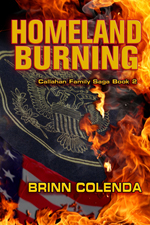



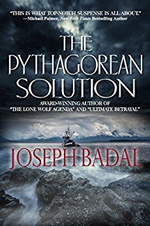

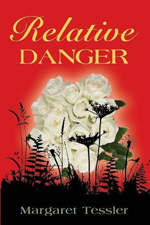
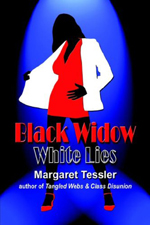

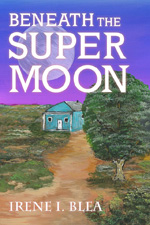

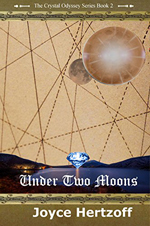





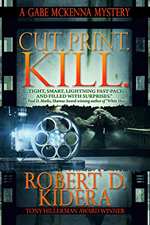
 You’ve written three novels in the Harrie McKinsey mystery series. Did Harrie still surprise you as you wrote her story for Murder on Frequency?
You’ve written three novels in the Harrie McKinsey mystery series. Did Harrie still surprise you as you wrote her story for Murder on Frequency?


